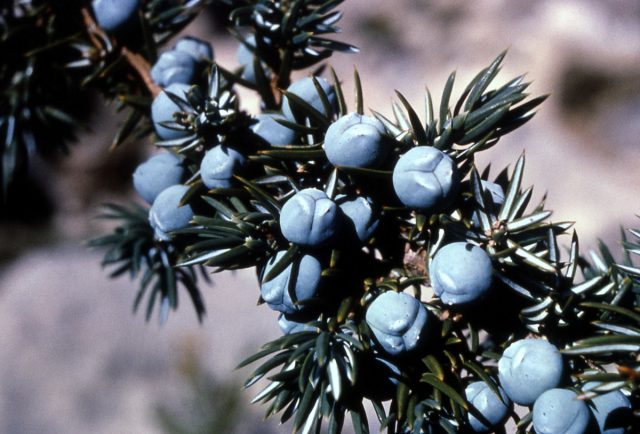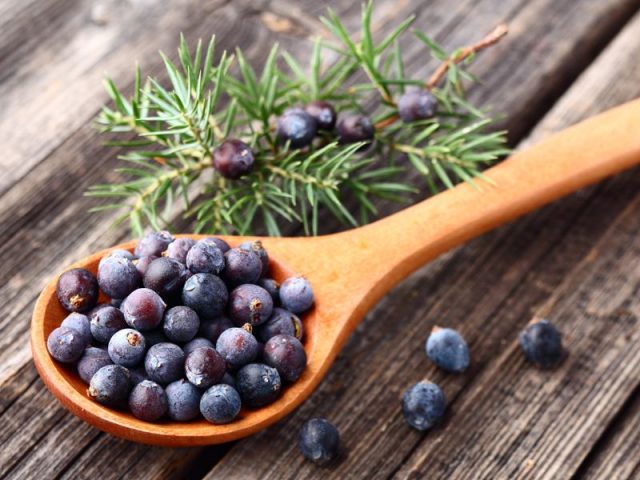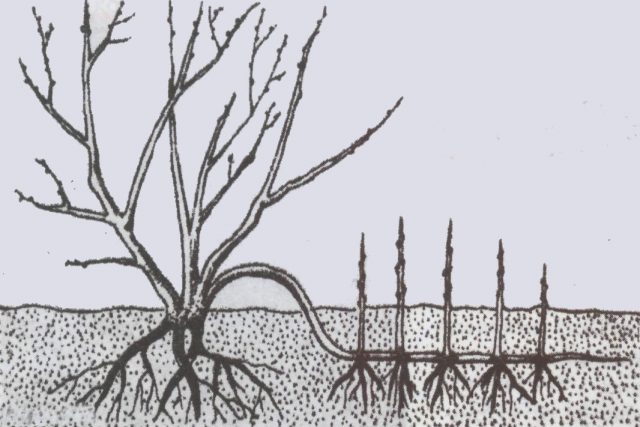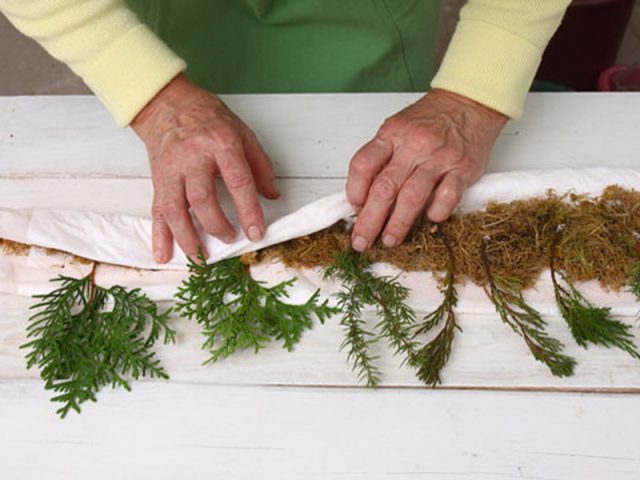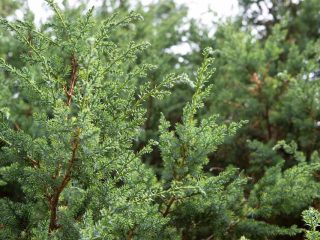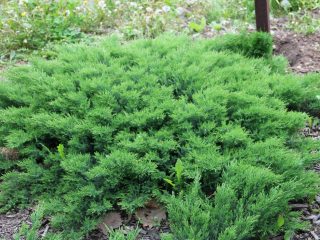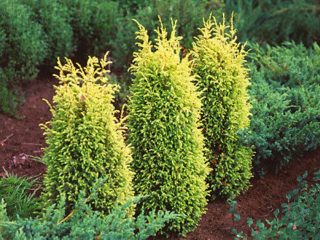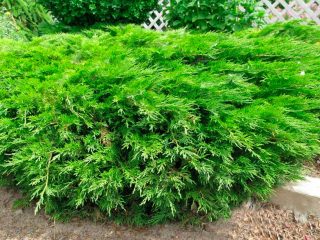Content
Juniper is an evergreen ornamental shrub of the Cypress family. It can be used not only in landscape design, but also for medicinal purposes. The plant has many useful properties, it perfectly disinfects the air. Juniper can be propagated in various ways, but in order to do this successfully, certain rules must be followed.
Is it possible to propagate a juniper
If the juniper reproduces in natural conditions, it means that it can be done artificially, although the independent cultivation of conifers is a rather laborious task that requires time, as well as certain skills and experience.
Features of the reproduction of juniper
In the wild, juniper's primary breeding method is by seed. The plant is dioecious, and both male and female cones grow on it, more like berries. It is in them that the seeds ripen. They are small in size and very volatile. When the buds of the plant open, the seeds are carried over considerable distances by the wind and birds.
How juniper multiplies at home
The seed method can be used at home, but only when reproducing common juniper. For decorative species, it is not suitable, since it does not retain the varietal properties of the plant. In this case, vegetative methods of reproduction of juniper are much more effective, such as:
- cuttings;
- obtaining cuttings from the mother plant;
- division of the bush.
Cuttings are the main breeding method for varietal shrubs. Creeping species propagate by layering. You can also use the method of dividing the bush for reproduction, but it requires preliminary preparation.
For independent reproduction of this evergreen shrub, you can use any of the species listed above.
How the juniper reproduces by spores
Contrary to popular belief, juniper does not reproduce by spores. After pollination, the seeds ripen in female cones (cones) for 2 years. They usually appear at the ends of the shoots for 3-5 years. During this time, their color changes from light green to dark blue, almost black. Each cone contains from 2 to 12 seeds. To get seeds from fully ripe cones, the fruits must first be soaked in water and then grinded.
Seeds are planted in open ground from September to November, while the soil is necessarily mulched with peat or humus. In the ground, seeds undergo natural stratification and sprout in the spring. Their germination rate is quite low, so you should not be surprised that there may be no seedlings at all. Sometimes planted seeds sprout only 2, or even 3 years after planting. It is possible to increase germination if the seeds are kept in a root growth stimulator for half an hour before planting.
Reproduction of juniper by layering
The creeping species of this ornamental shrub is quite easy to propagate by layering. To do this, choose a strong lateral shoot, cut its bark in several places, then bend it to the ground, fix it with a wire brace and cover it with soil. After that, this place is regularly moistened. In those places where the bark has been incised, the shoot will take its own roots, and the young growth will begin to grow.
After the seedlings grow up and get stronger, they can be cut off from the mother bush and transplanted to a permanent place.
Reproduction of a juniper by dividing a bush
Young juniper bushes can be propagated by division. To do this, they are dug out of the ground and divided into several parts with pruning shears, each of which has its own root system and shoots. After that, it remains only to plant the juniper in a permanent place.
Reproduction of juniper berries at home
Planting seeds can also be done at home. For this, you can use wooden boxes filled with nutrient soil. It is advisable to add soil from under an adult juniper to it, since it contains symbiont mushrooms useful for growth. The box with the planted seeds is naturally stratified, for example buried in the snow.
Reproduction of juniper by shoots
Reproduction by shoots (cuttings) is the most commonly used method. Green, non-lignified shoots from the top of the bush are suitable for harvesting cuttings. For creeping species, vertically growing branches should be selected. The length of the cut shoot should be about 20 cm. The lower part of it (about 4 cm) is completely cleaned of bark. Cuttings are planted in a moist substrate of peat and humus, which are mixed with each other in equal proportions.
For planting cuttings, it is necessary to select places with diffused sunlight and moderate soil moisture, which must be controlled and not allowed to become waterlogged. Rooted cuttings can be transplanted to permanent sites when they reach the age of 3 years.
Reproduction of juniper by dropping
For the propagation of bushes in this way, they are piled up in advance. This measure allows you to get a large number of adventitious roots on the lateral shoots. Then the bush is dug up. Rooted shoots are cut off and planted as independent seedlings for growing.
How to properly propagate a juniper
It is noteworthy that it is possible to work with juniper for breeding purposes throughout the season, and even the winter period is not an exception. Although each of the above methods of propagation of this ornamental plant can be used only at certain times of the year.
Reproduction of juniper in summer
Summer is not the best time to breed thorny evergreen shrubs. An exception can be made only by creeping species, which at this time can be added dropwise or spread by layering from the mother bush. These works can be performed until mid-July.
How to propagate a juniper at home in the fall
In the fall, you can plant the seeds of an ordinary juniper to obtain seedlings. These plants are the strongest planting material that can be grown both independently and used as a rootstock for grafting more valuable species. You can plant seeds throughout the fall. For this, both open ground and special containers are suitable. A prerequisite is the stratification of seeds, that is, keeping them for a long time at a low temperature. Only in this case a healthy strong bush grows.
How to propagate juniper in winter
Reproduction of juniper in winter is carried out by cuttings, but in this case the cuttings are planted not in open ground, but in a special substrate and stored in a warm room. To obtain planting material, side branches with a piece of wood (heel) are used. The lower part of the shoot is completely cleaned of needles. Then the cuttings are kept in Epin's solution for 12 hours.
While the cuttings are getting a boost of energy for growth, it is necessary to prepare a nutritious substrate. For this, it is preferable to use sphagnum moss, previously soaked in water. The further course of work is as follows:
- Cut a strip of clean cloth. It will act as a container with a nutrient medium.
- Wet moss is laid out in a strip along the entire tape.
- The lower part of the cuttings is powdered with Kornevin. The cuttings are laid out so that the upper part is above the level of the fabric tape, and the lower one remains on the moss pillow.
- The cuttings are closed with the lower part of the tape.
- The entire strip of fabric with cuttings is rolled up like a medical bandage and fixed with an elastic band.
The roll is placed in a plastic bag and placed in a bright, cool place, for example, on a window. By the spring, the cuttings will give good roots, and they can be planted in a greenhouse for growing, and then on a permanent place.
Reproduction of juniper in spring
Spring is also good for propagation by cuttings. In addition, at this time, you can add plants to further dividing the bushes, and in the spring you can fix lateral shoots for reproduction of juniper by layering.
Juniper breeding tips for gardeners
Breeding junipers is usually not a problem. Here are some tips that will come in handy for a novice gardener and will help you avoid many mistakes.
- The seed method of breeding this plant is long and unreliable. Due to the low germination of seeds, it can last for several years, however, plants grown from seeds are the most robust. Therefore, this method of reproduction should be used only for breeding common juniper, planted in order to improve the ecology of the site. For breeding ornamental species, it is worth using other methods.
- Juniper is relatively easy to cut and, if all the rules are followed, it gives a high percentage of rooting. Cutting is the safest way to propagate a juniper, suitable for all species.
- Digging is the quickest and easiest way to propagate a juniper. If the gardener is not ready to work with cuttings, then this method will probably be the most suitable for obtaining a small number of seedlings. The method of reproduction of juniper by air layers is not particularly difficult.
- Juniper shoots have an interesting feature. If the material for the cuttings is taken from the top of the bush, then the new plant will stretch upward. This quality is used when growing columnar varieties. If the cuttings are cut from the side branches, then the young bush will tend to grow in breadth.
- For cuttings, bushes are used at least 8-10 years old. By this time, the plant is fully formed, and the cutting will completely retain all its characteristics.
- Cuttings should be harvested early in the morning.
- Rooting of juniper cuttings at home can be carried out and be quite successful without additional treatment with special preparations. However, to increase the percentage of rooted shoots, it is advisable to use root formation stimulants.
Conclusion
Reproduction of a juniper at home is possible, and this can be done in several ways. Which one to use is up to the gardener himself, based on his experience and skills. This procedure is not particularly difficult, and if it is successfully completed, the personal plot can be independently decorated with these wonderful evergreen long-lived bushes.
